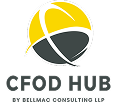In today’s highly volatile business environment, marked by rapid tech shifts, inflation, regulatory changes, and cyber threats, the question isn’t if your company will face serious threats, but how prepared you’ll be when they hit.
For growing and mid-sized firms, Enterprise Risk Management (ERM) must move beyond a “nice-to-have” compliance function and become a strategic enabler—and the CFO is the new frontline risk steward.
From Controller to Strategic Risk Steward
The modern CFO must do more than guard accuracy; they must help steer the organization through uncertainty. Industry insights are clear:
- CFOs are now bridging the gap between operational risk owners and the board.
- The finance function is expected to fund, prioritize, and validate risk mitigation—from scenario models to stress tests.
- Risk appetite and capital allocation are C-suite decisions, not merely compliance footnotes.
In short: ERM is the strategic axis through which growth, resilience, and sustainability are achieved.
The 5 Key Pillars of Effective ERM
A robust ERM program ensures you’re proactively managing your vulnerabilities. At CFOD Hub, we help clients embed risk thinking across these core components:
| Pillar | What It Means | How CFOD Hub Supports |
| 1. Risk Identification & Assessment | Systematically uncovering all internal and external threats (financial, operational, strategic, ESG, compliance). | We facilitate cross-functional workshops to surface blind spots, build risk registers, and accurately score risks. |
| 2. Prioritization & Appetite | Focusing on the few risks that truly impact your capital and reputation. | We help leadership define clear risk thresholds tied to cash flow, equity, and strategic goals. |
| 3. Mitigation & Response | Establishing clear owners, controls, monitoring, and contingency plans for key risks. | We assist in designing robust internal controls, scenario planning, and investing in the right resilience tools. |
| 4. Governance & Reporting | Ensuring clear escalation paths and board-level visibility. | We deliver executive-level dashboards and reporting templates, ensuring risk is visible in your fiscal rhythm. |
| 5. Culture & Capacity | Embedding a risk mindset across all levels of the organization. | We train teams, embed risk checkpoints in processes, and support organization-wide adoption. |
Why Growing Businesses Can’t Afford to Wait
ERM isn’t just for multinational corporations. Smaller firms are often more vulnerable to shock and less able to absorb mistakes. By prioritizing ERM, you gain:
✅ Safeguarded Cash Flow & Liquidity: Preventing surprises that drain working capital.
✅ Better Investment Decisions: Quantifying downside risk informs which projects to pursue (and which to pause).
✅ Stronger Stakeholder Confidence: Demonstrating discipline to investors, lenders, and partners.
✅ Optimized Risk-Reward Tradeoffs: Turning intelligent risk-taking into a competitive advantage.
Partner with CFOD Hub for Strategic Resilience
As part of our outsourced CFO and financial advisory suite, CFOD Hub ensures ERM is practical, not theoretical. We integrate risk directly into your core finance processes:
- Strategic Planning: Overlaying risk-adjusted scenarios on your growth forecasts.
- Liquidity Management: Stress-testing projections and flagging vulnerabilities to working capital.
- Operational Controls: Assessing internal controls, segregation of duties, and fraud risk.
- Investment Appraisal: Running sensitivity analyses for expansion, M&A, and new capital investments.
We bring cross-industry insights to refine your risk posture faster and more efficiently.
Start Today: Small Steps, High Impact
Implementing ERM doesn’t have to be overwhelming. You can start with these high-impact steps:
- Risk Inventory Workshop: Gather functional heads to map your top 10–20 risks.
- Heat-map & Prioritize: Focus on the 5 highest-impact risks.
- Assign Owners: Define accountability and establish clear mitigation actions for the next quarter.
- Embed in Planning: Include risk assessments as a mandatory checkpoint in all quarterly planning cycles.
Managing risk is about understanding your tolerance and ensuring you can absorb, adapt, and push forward.
If you are looking to elevate your ERM practice or want to explore how CFOD Hub can embed strategic risk management into your company’s fiscal rhythm—let’s connect.
